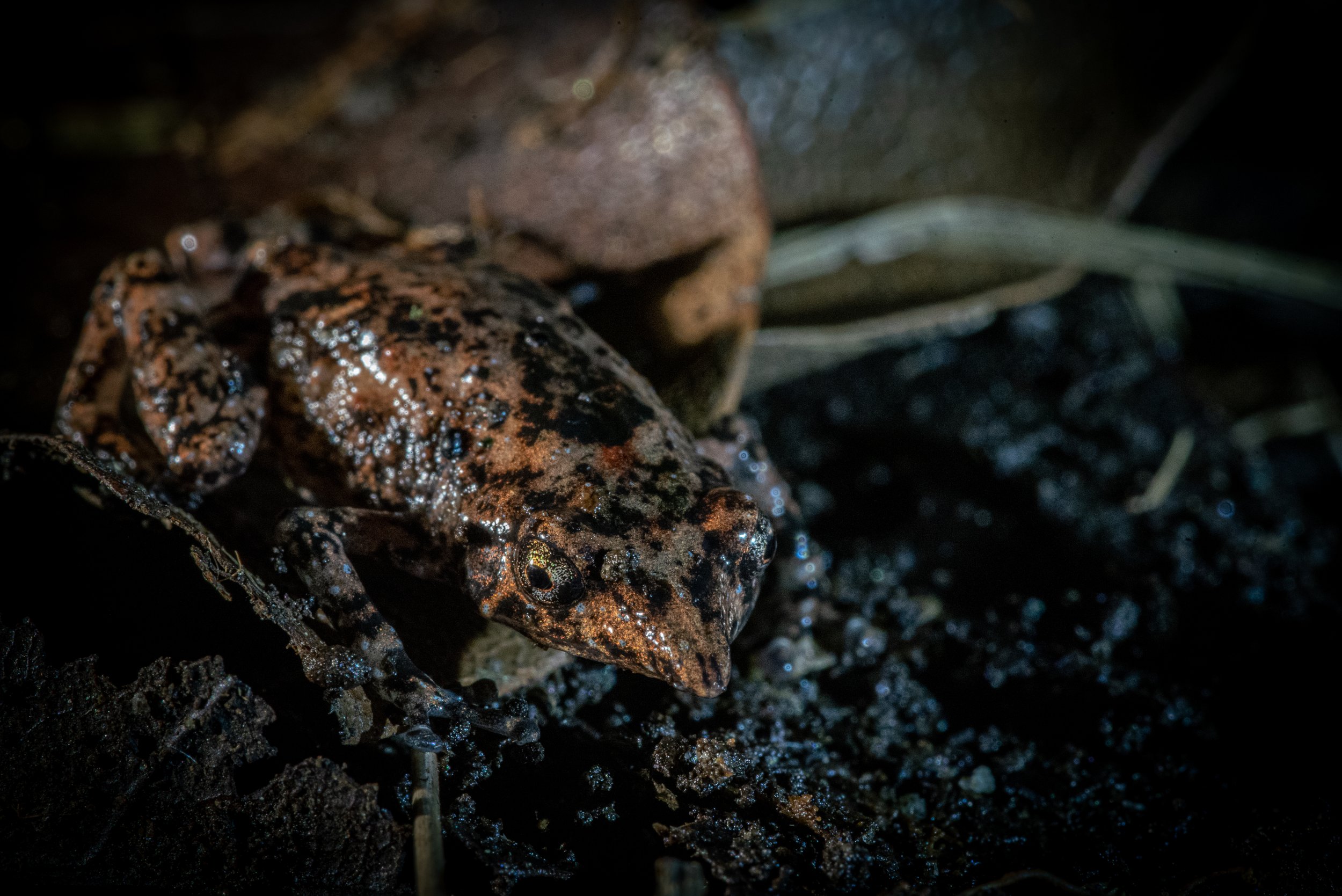
The expedition carried out the first comprehensive assessment of invertebrate, reptile, amphibian, and mammal life in the Cyclops Mountains
Biodiversity reseach highlights
-

A new species of terrestial shrimp
We collected a new species of terrestrial shrimp, found in the soil and in the trees of the Cyclops Mountains. This shrimp belongs to a lineage that is normally found on the seashore, and it was an enormous surprise to the expedition team when it was discovered living hundreds of meters high up on the slopes of the mountains. The shrimp uses its hindlegs to undertake long jumps when chased by predators, and carries its eggs in pockets along its body.
-

Dozens of new insect species
We discovered many new insect species, with dozens left to be found among our collected material. Insects predominate in all terrestrial ecosystems, and serve as essential bio-indicators that are crucial to our understanding of rainforest ecology. The insects we collected will allow us to understand the evolutionary origins of the fauna of the Cyclops Mountains. Given that we collected thousands of specimens, research is ongoing.
-

A new species of frog
The expedition discovered a frog species that is entirely new to science. It is a member of the genus Choerophryne, and emits a high-pitched peeping noise. It has yet to be formally described. Because of its distinctive nose, the expedition team called it the goblin-nosed frog. Recording the amphibian fauna of the Cyclops is essential to its protection and long-term conservation. Identification by Stephen Richards from the South Australian Museum in Adelaide, Australia.